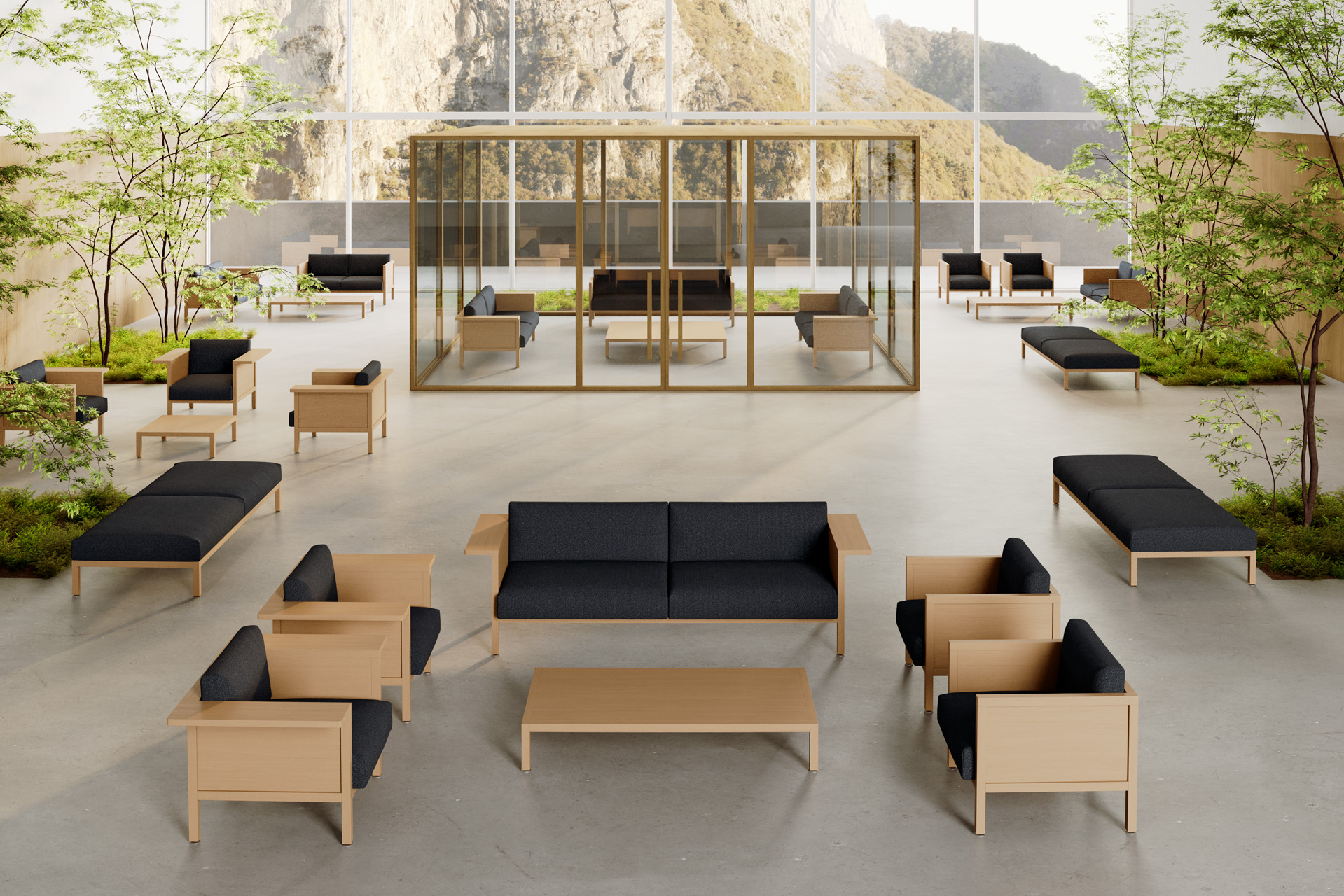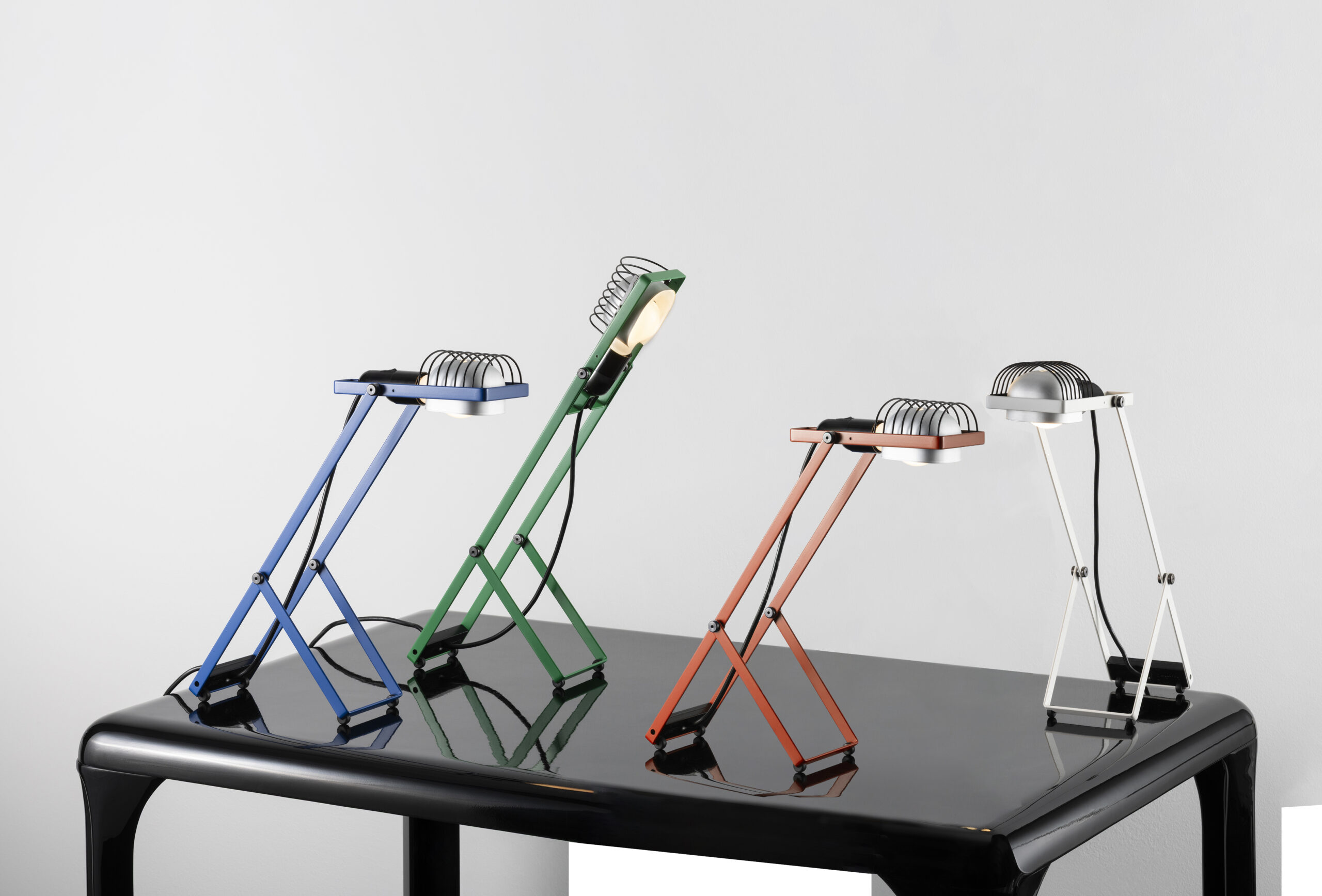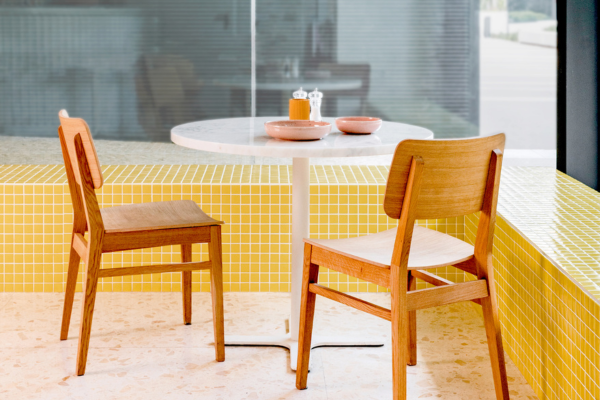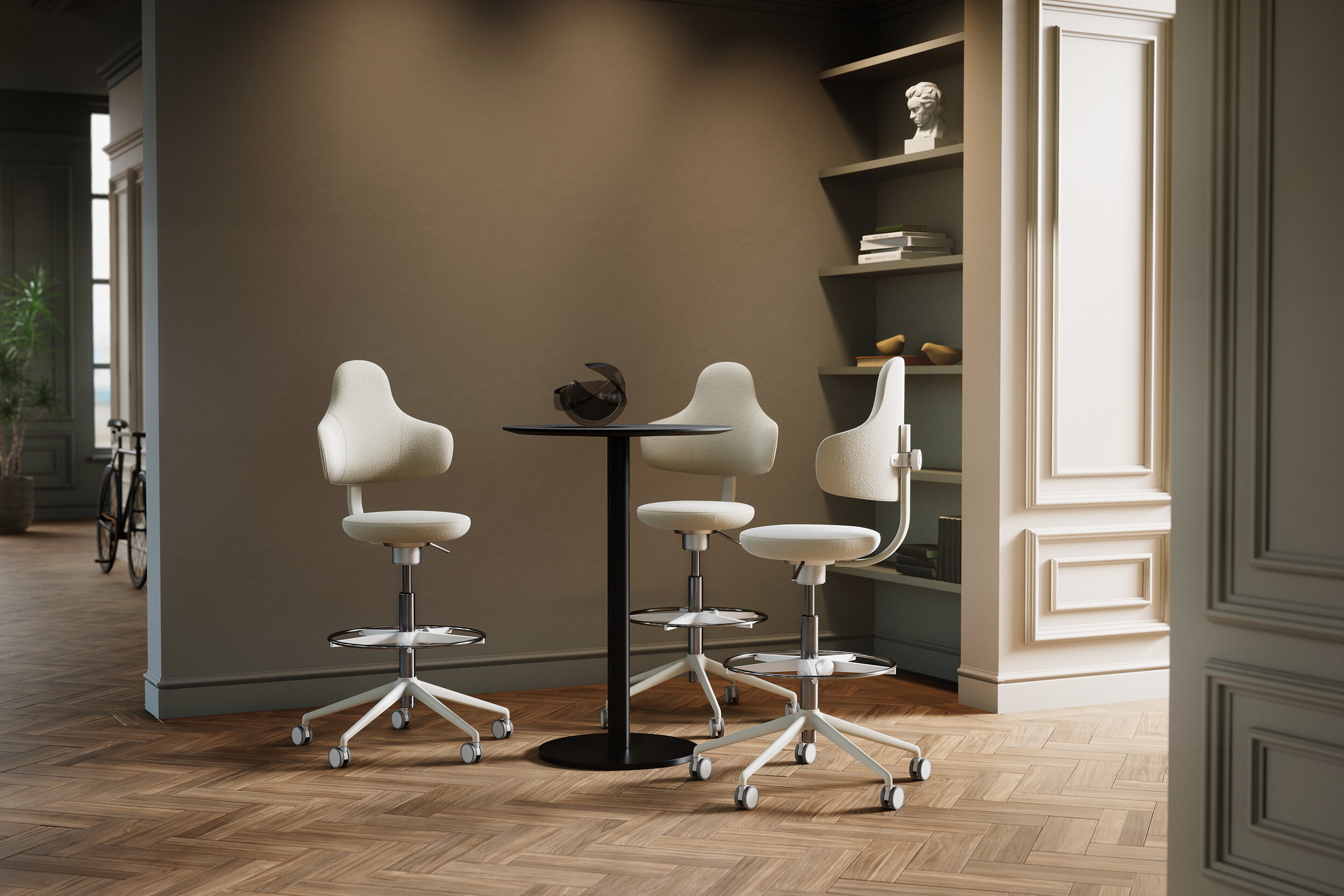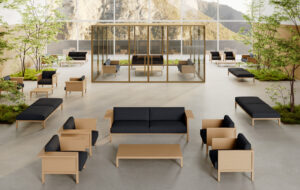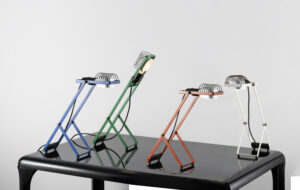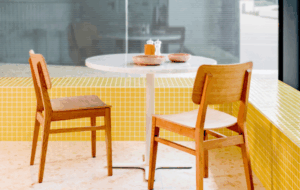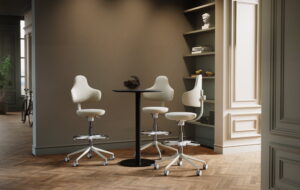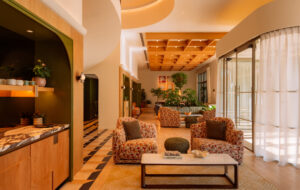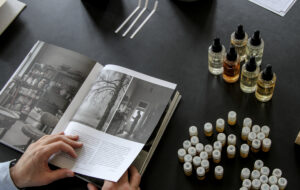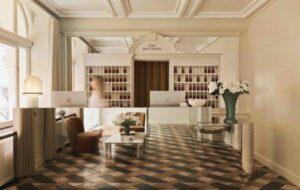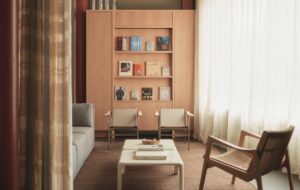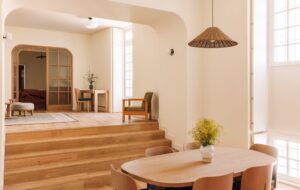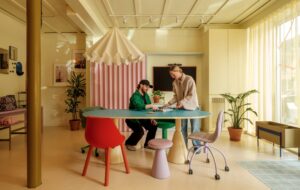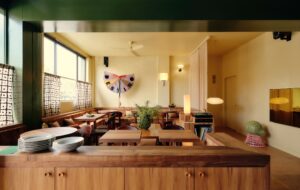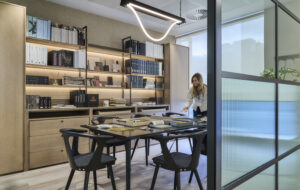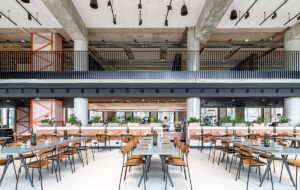 Jean-Marie Roy’s 1960s church, extended and remodelled as a library|Glass and steel give a stripped-back look, with flashes of bright yellow||
Jean-Marie Roy’s 1960s church, extended and remodelled as a library|Glass and steel give a stripped-back look, with flashes of bright yellow||
Designed by architect Jean-Marie Roy in 1964, this church in Sainte-Foy, a suburb of Quebec City, had become vacant in recent years, so the city launched a competition for its reinvention. When Montreal-based firm Dan Hanganu Architects won the commission, in conjunction with Côté Leahy Cardas Architects, the project became all the more personal. Hanganu and Roy were close friends, so the former telephoned the latter to break the news. “I said, ‘I’d like you to know I’ll do my utmost not to disappoint you,’” Hanganu recounts. “He was happy it was me.”
A few months after that conversation, Roy passed away. With the project now lent an added gravitas, Hanganu’s design aimed to respect his friend’s legacy, and give the building a meaningful purpose. “I knew if we were going to revitalise a church the best way would be a library, because whatever attitudes, right or wrong, regarding our faith, many will make the association that knowledge comes from above.”
Out of respect for his friend’s work, Hanganu had ambitious desires to add a contemporary annex that complemented the original form without actually attaching to it. The shell – a folded plane of triangular shapes, seemingly tethered to the ground like a tent – is preserved, with a extra floor and mezzanine added within, plus a three-storey glass box stretching from the back of the building. In glass and white steel, the interior is stripped back to a minimum, allowing the volume of the space to take precedent, while allowing the natural light from new skylights to flood through.
Through the glazed exterior, the vibrant yellow on some floors and the undersides of staircases can be seen from quite a distance – “like a bird in a cage,” describes Hanganu. Worn-out asphalt shingles on the exterior roof were painstakingly removed and replaced with Galvalume (galvanised aluminium) shingles, which subtly reflect the colour of the sky.
Having designed many a library in his time, Hanganu says that through this project (now named the Bibliothèque Monique Corriveau), he has seen a dramatic change in that type of building’s function and wider civic importance. “It’s interesting that in contemporary society, the library is not what it used to be, a temple of books. It’s become a community centre, a social place. It has a cafe, there are exhibitions and talks; they don’t throw out people who come in with a Coke and a sandwich. It’s no longer formal, and it fits with democratic society.”

